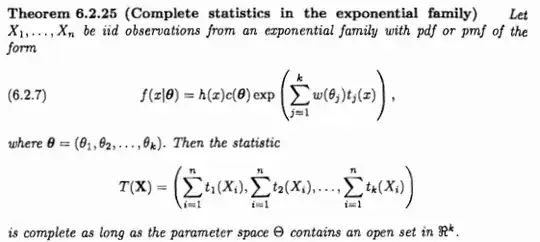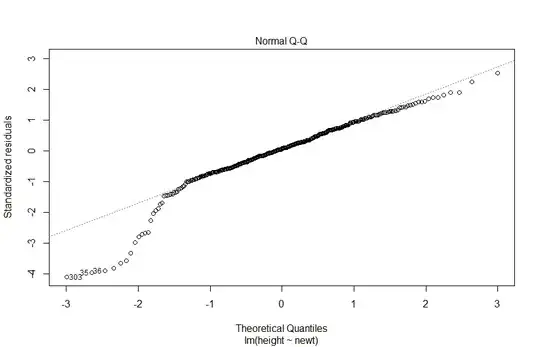I was looking at a problem in the book of "Statistical Inference" second edition by George Casella and Roger L. Berger from chapter 6 that deals with sufficient statistics, minimal sufficient statistics, complete statistics, etc.
In problem 6.20 part d) I have the following question
Let $X_1,X_2,\cdots X_n$ be iid observations with the following pdf:
$f(x|\theta)=e^{-(x-\theta)}\cdot exp(-e^{-(x-\theta)})$
Where $-\infty <x< \infty$ and $-\infty <\theta< \infty$
Find a complete sufficient statistic or show that one does not exist.
I proved that this belongs to the exponential family rewriting the pdf the following way: $f(x|\theta)=e^{-x}e^{\theta}\cdot exp(-e^{-x}\cdot e^{\theta})$
$h(x)=e^{-x}$; $c(\theta)=e^{\theta}$; $w(\theta)=e^{\theta}$; $t(x)=-e^{-x}$
so I concluded that it has a complete sufficient statistic due to the theorem:
However, I then looked at a solution manual and they suggested a different answer so I'm kind of confused and don't know what I did wrong.
This was the solution:
Any help is much appreciated, thank you in advance.

